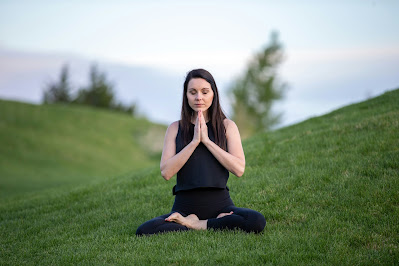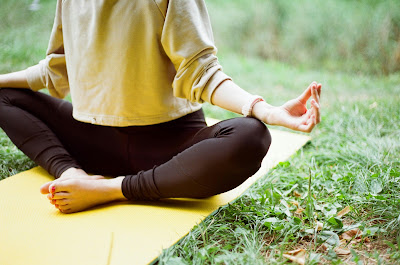Yoga for Better Sleep: Poses for Insomnia
Sleep is essential for overall health and well-being. It plays a crucial role in various bodily functions, including metabolism, immune function, and cognitive performance. However, many people struggle with insomnia, a common sleep disorder characterized by difficulty falling asleep or staying asleep. Fortunately, yoga offers a natural and effective way to improve sleep quality and manage insomnia symptoms.
Understanding Insomnia
Insomnia is a sleep disorder that affects millions of people worldwide. It is characterized by difficulty falling asleep, staying asleep, or waking up too early and not being able to fall back asleep. Insomnia can be acute, lasting for a few nights, or chronic, lasting for weeks, months, or even years. Common causes of insomnia include stress, anxiety, depression, poor sleep habits, and medical conditions such as sleep apnea and restless legs syndrome. Insomnia can have a significant impact on a person's health, leading to fatigue, irritability, difficulty concentrating, and an increased risk of developing chronic diseases such as diabetes and heart disease.
Yoga for Better Sleep
Yoga offers a holistic approach to improving sleep quality and managing insomnia symptoms. It combines physical postures, breathing exercises, and meditation to promote relaxation and reduce stress and anxiety, which are common triggers for insomnia. Some of the best yoga poses for promoting sleep include:
- Balasana (Child's Pose): This gentle forward bend helps calm the mind and relieve stress and tension in the body.
- Viparita Karani (Legs-Up-The-Wall Pose): This restorative pose helps improve blood circulation and relaxes the nervous system, promoting relaxation and sleep.
- Supta Baddha Konasana (Reclining Bound Angle Pose): This pose opens the chest and abdomen, promoting deep breathing and relaxation.
- Savasana (Corpse Pose): This final relaxation pose helps calm the mind and relax the body, preparing it for sleep.
How Yoga Helps in Sleep
Yoga helps improve sleep quality by regulating the nervous system, reducing stress and anxiety, improving blood circulation, and relaxing muscles. These effects can help calm the mind and body, making it easier to fall asleep and stay asleep throughout the night.
Creating a Bedtime Yoga Routine
To create a bedtime yoga routine for better sleep, start by setting up a calm environment free from distractions. Then, prepare your body with gentle stretches to release tension and relax your muscles. Practice breathing exercises, such as deep belly breathing or alternate nostril breathing, to calm your mind and prepare for sleep. Finally, incorporate meditation to further relax your body and mind, promoting deep and restful sleep.
Additional Tips for Better Sleep
In addition to practicing yoga, there are several other tips you can follow to improve your sleep quality:
- Maintain a consistent sleep schedule: Go to bed and wake up at the same time every day, even on weekends.
- Limit screen time before bed: Avoid using electronic devices such as smartphones, tablets, and computers at least an hour before bedtime.
- Avoid heavy meals and caffeine close to bedtime: Eat a light dinner and avoid caffeine and other stimulants in the evening.
- Create a relaxing bedtime ritual: Develop a calming routine before bed, such as taking a warm bath, reading a book, or practicing gentle yoga.
Exploring the Benefits of Yoga for Better Sleep
In today's fast-paced world, many individuals struggle to achieve the recommended amount of sleep each night. Whether it's due to work stress, family responsibilities, or simply an overactive mind, getting enough rest can sometimes feel like an elusive goal. However, incorporating yoga into your daily routine can offer a multitude of benefits for improving sleep quality and overall well-being.
The Mind-Body Connection in Yoga
One of the key principles of yoga is the connection between the mind and body. Through a combination of physical postures, breathing techniques, and meditation, yoga helps individuals cultivate a sense of awareness and presence in the present moment. This heightened awareness can be particularly beneficial for those experiencing insomnia, as it allows them to observe and understand the thoughts and sensations that may be interfering with their ability to sleep.
Stress Reduction and Relaxation
Stress and anxiety are common culprits behind sleep disturbances, often leading to racing thoughts and muscle tension that can make it difficult to unwind at the end of the day. Fortunately, yoga offers a variety of tools for stress reduction and relaxation, helping to soothe the nervous system and promote a sense of calmness and tranquility.
The Role of Breathing in Sleep Quality
One of the most powerful tools in the yogic toolkit is the breath. By practicing conscious breathing techniques, such as diaphragmatic breathing or alternate nostril breathing, individuals can activate the body's relaxation response, signaling to the brain that it's time to unwind and prepare for sleep. These simple yet effective practices can be done anywhere, making them an ideal addition to a bedtime routine.
Improving Circulation and Sleep
Another benefit of yoga is its ability to improve circulation throughout the body. Certain yoga poses, such as inversions and forward bends, help to increase blood flow to the brain and vital organs, promoting relaxation and easing tension in the body. By encouraging better circulation, yoga can help individuals feel more comfortable and at ease in their bodies, making it easier to drift off into a peaceful slumber.
The Importance of Mindfulness in Sleep Hygiene
In addition to its physical benefits, yoga also teaches valuable lessons in mindfulness and self-care. By practicing yoga regularly, individuals learn to prioritize their own well-being and create space for relaxation and rejuvenation in their daily lives. This mindfulness extends to sleep hygiene practices, such as creating a calming bedtime routine and maintaining a consistent sleep schedule, which are essential for promoting healthy sleep habits.
Harnessing the Power of Meditation for Sleep
Meditation is another powerful tool for improving sleep quality and managing insomnia. By practicing mindfulness meditation, individuals can cultivate a sense of inner peace and tranquility that carries over into their sleep experience. Mindfulness meditation involves observing the thoughts and sensations that arise without judgment or attachment, allowing individuals to let go of worries and concerns that may be keeping them awake at night.
The Connection Between Yoga and Sleep Hormones
Yoga has been shown to positively influence the body's production of sleep hormones, such as melatonin and serotonin. Melatonin, often referred to as the "sleep hormone," regulates the sleep-wake cycle and is essential for promoting restful sleep. Serotonin, sometimes called the "happiness hormone," helps regulate mood and promotes feelings of relaxation and well-being. By practicing yoga, individuals can naturally boost their production of these hormones, helping them to feel more relaxed and ready for sleep.
The Power of Consistency in Yoga Practice
Like any form of exercise or self-care practice, consistency is key when it comes to reaping the benefits of yoga for better sleep. While a single yoga session may offer immediate relaxation and stress relief, it's the cumulative effects of regular practice that lead to lasting improvements in sleep quality and overall well-being. By committing to a consistent yoga routine, individuals can create positive habits that support their sleep goals for the long term.
Exploring Different Styles of Yoga for Better Sleep
Yoga is a diverse practice with many different styles and traditions, each offering its own unique benefits for sleep and relaxation. Some styles, such as restorative yoga and yin yoga, focus on gentle, passive stretches and long-held poses designed to calm the nervous system and promote deep relaxation. Other styles, such as vinyasa flow and power yoga, emphasize dynamic movement and breath synchronization, helping to release tension and invigorate the body and mind.
Incorporating Yoga Into Your Bedtime Routine
If you're interested in incorporating yoga into your bedtime routine, start by experimenting with different styles and poses to see what works best for you. Consider attending a local yoga class or exploring online resources for guided yoga practices tailored to sleep and relaxation. Remember to listen to your body and honor its needs, modifying poses as needed to ensure comfort and safety.
Conclusion: Embracing Yoga as a Path to Better Sleep
In conclusion, yoga offers a natural and effective approach to improving sleep quality and managing insomnia symptoms. By harnessing the power of breath, movement, and mindfulness, individuals can cultivate a sense of calmness and relaxation that prepares them for a restful night's sleep. Whether you're new to yoga or a seasoned practitioner, incorporating yoga into your bedtime routine can be a valuable tool for enhancing your overall well-being and enjoying a deeper, more restorative sleep.
FAQs
Can yoga cure insomnia?
Yoga can help manage insomnia symptoms and improve sleep quality, but it may not cure insomnia entirely. It is best used as part of a comprehensive treatment plan that may include other lifestyle changes and medical interventions.
How long does it take for yoga to improve sleep?
The effects of yoga on sleep can vary from person to person. Some people may experience improvements in sleep quality after just a few sessions, while others may take longer to see results. Consistency is key, so it is important to practice yoga regularly for optimal benefits.
Is it necessary to practice yoga every day for better sleep?
While practicing yoga every day can have numerous health benefits, including improved sleep quality, it is not necessary to practice yoga daily to see improvements in sleep. Even practicing yoga a few times a week can have a positive impact on sleep quality.
Are there any specific yoga poses to avoid before bedtime?
Some yoga poses, such as inversions or intense backbends, may be stimulating and not suitable for bedtime practice. It is best to avoid these poses close to bedtime and focus on gentle, relaxing poses instead.
Can yoga be combined with other treatments for insomnia?
Yes, yoga can be combined with other treatments for insomnia, such as cognitive-behavioral therapy for insomnia (CBT-I) or medication. It is essential to consult with a healthcare professional to develop a comprehensive treatment plan tailored to your individual needs.


.jpg)
